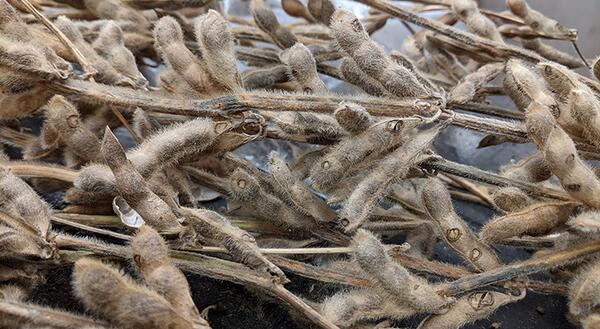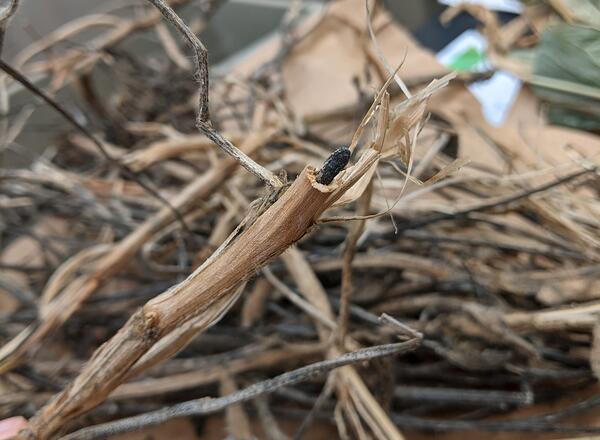
I’m always looking for a reason to talk about my dog because, well, I’m obsessed with him. I think I can use him to draw a good analogy of the importance of season-long scouting in your soybean fields. Let me put it like this: my dog is a living thing that I care for deeply. As he cannot talk, I am the only one who can advocate for him and his wellbeing. Just because my dog is getting old (he’s 10.5 but has had a number of serious health problems thus far in life), doesn’t mean I stop paying attention to him or stop caring for him. I will take care of him and do everything I can to help him live a long and happy life, with hopes of catching any additional ailments in a timely manner so that we can determine a management plan going forward.
The same is true for your soybeans. Sure, you’re not necessarily emotionally invested in your soybeans. But you certainly are financially invested in a major way. And your soybeans cannot pick up a phone and tell you when things are going awry in the field. You are the only one that can advocate for the health and yield of your soybean plants.
Where am I going with this? Well, I want to tell you the importance of continued vigilance of your soybeans throughout the growing season and how it can help you be an advocate for your future yield potential in that field.
You see, back in 2020 I spent a few months traveling to and from campus twice a week to lend a hand at the University of Illinois Plant Clinic. Why? Well, simply put, diagnosing plant problems and coming up with management plans for clients is one of my favorite things to do as a plant doctor. The months in which I went to help at the Plant Clinic were from August to November and I noticed something kind of funny.
We were getting a lot of dead plants. Like, completely dead (Fig. 1). These soybean plants were not representative of entire fields but rather representative of patches observed in fields that had prematurely died/matured. “What’s the problem with that?”, you might ask. The Plant Clinic is in the business of plant doctoring, not plant autopsies. Yes, we can look at a dead plant and tell you what pathogens are present, but there is a catch. A lot of the late-season soybean diseases are caused by pathogens that take advantage of plants that are already fighting against other pathogens, which can mask what initially caused the plant problem.
For example, let’s say that maybe there was a patch or patches in a field that developed symptoms of sudden death syndrome (SDS, caused by Fusarium viguliforme), but the patches go unnoticed. As time continues, the symptom severity on plants within these patches gets worse and the plant defenses are already pushed to the limit.

Now other late-season pathogens can come in an colonize these plants. Now, it’s difficult not to notice a dead patch of plants in a field, so you see these plants and decide to send a sample to the plant clinic. However, by this time, the plants have already defoliated, and stems are senescing. Making an SDS diagnosis in this scenario is nearly impossible unless there are blue sporulating structures of F. virguliforme on the roots.
So, all a diagnostician can do is look at what pathogens are currently on the plant. Common late-season soybean diseases/pathogens include stem canker (Diaporthe spp.), pod and stem blight (Diaporthe sojae), anthracnose stem blight (Colletotrichum spp.), charcoal rot (Macrophomina spp). and more. The biggest issue in this case is that the grower will not know what caused the plants to be sick initially and is therefore unable to plan accordingly for the future.
So don’t stop being the only advocate that your crops have as the growing season goes past the midway point in the season. Knowing what diseases affect your beans this year garners you with more capability to make plans to protect future yield from your fields.